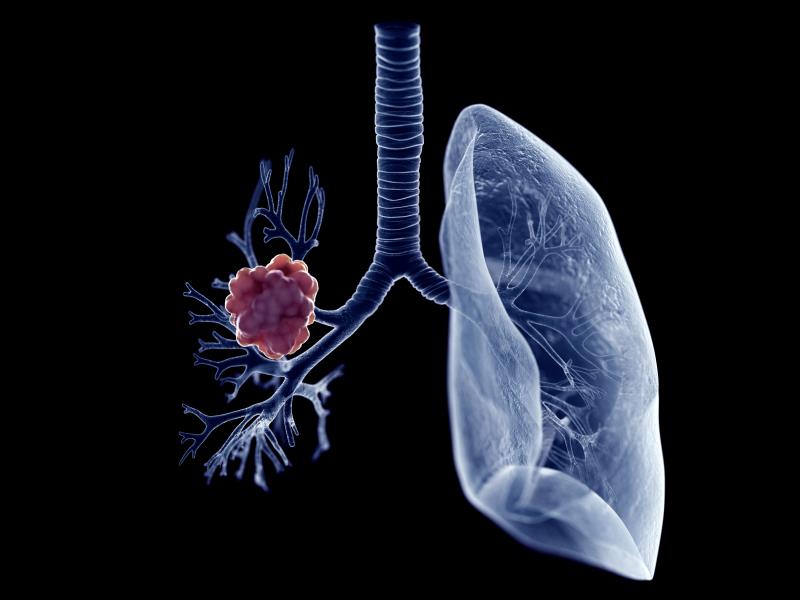Volume-based, low-dose computed tomography (CT) screening reduced lung cancer mortality rates in former and current smokers, the Dutch-Belgian NELSON* trial has shown.
The study comprised 13,195 men (primary analysis) and 2,594 women (subanalysis). Participants were randomized 1:1 to undergo CT screening at baseline and at 1, 3, and 5.5 years, or no screening. More than half of the men were current smokers (55 percent), with a median smoking history of 38 pack-years. [N Engl J Med 2020;382:503-513]
In the primary analysis, at 10 years, despite the higher cumulative incidence of lung cancer among screened vs nonscreened participants (5.58 vs 4.91 cases/1,000 person-years (PY); rate ratio [RR], 1.14, 95 percent confidence interval [CI], 0.97–1.33), mortality rate was significantly lower (2.5 vs 3.30 deaths/1,000 PY), resulting in a cumulative RR of 0.76 (95 percent CI, 0.61–0.94; p=0.01).
“[These findings] showed that volume CT lung cancer screening, with low rates of follow up procedures for test results suggestive of lung cancer, resulted in substantially lower lung cancer mortality than no screening among high-risk persons,” said the researchers. This underscores the potential of volume CT screening to slash false positive tests and unnecessary workups without jeopardizing favourable outcomes, they added.
Weighing the risks, benefits
The 90-percent adherence rate to CT screening signals a high level of conscientiousness among participants, noted the researchers. “In the future, improvement in screening selection … will probably result in a more favourable trade-off between harms and benefits of CT lung cancer screening.” [Lancet Respir Med 2016;4:749-761; Lancet Oncol 2016;17:590-599; ESMO Open 2019;4:e000577]
“[Furthermore,] volume CT screening has led to a substantial shift to lower-stage cancers at the time of diagnosis, as well as to more frequent eligibility for curative treatment. [Given the] modest differences … between participants and eligible nonrespondents, we expect the results to be highly generalizable,” they added.
Greater benefit in women?
While the trial focused on men, the impact of volume CT screening on lung cancer mortality was consistently more favourable across the 10-year follow up period in the subgroup of women (RR ranging between 0.41 and 0.67). “[These] suggest greater benefits in women than in men,” said the researchers. However, this requires further exploration as the number of participants was relatively low, they added.
Potential overdiagnosis
There have been concerns regarding overdiagnosis in lung cancer screening, noted the researchers. The excess of 40 cases in the screening vs the no-screening arm 10 years following randomization (344 vs 304 cases) suggests an excess-incidence overdiagnosis rate of 19.7 percent for screening-detected cases. However, this dropped to 18 cases at 11 years post-randomization, yielding an excess-incidence overdiagnosis rate of 8.9 percent.
Evidence suggests that the lead time of CT screening may be 9–12 years for some cancers, implying that the appropriate estimation of overdiagnosis in the current study requires additional years of follow-up. [J Epidemiol Community Health 2015;69:1035-1039] “[As such,] an overdiagnosis rate of 8.9 percent for screening-detected cases may be considered as the upper limit of overdiagnosis in [our] trial. [Our] clinical management strategy … was highly restrictive with respect to invasive diagnosis and treatment of persistent subsolid nodules,” they added.
*NELSON: NEderlands–Leuvens Longkanker Screenings ONderzoek
